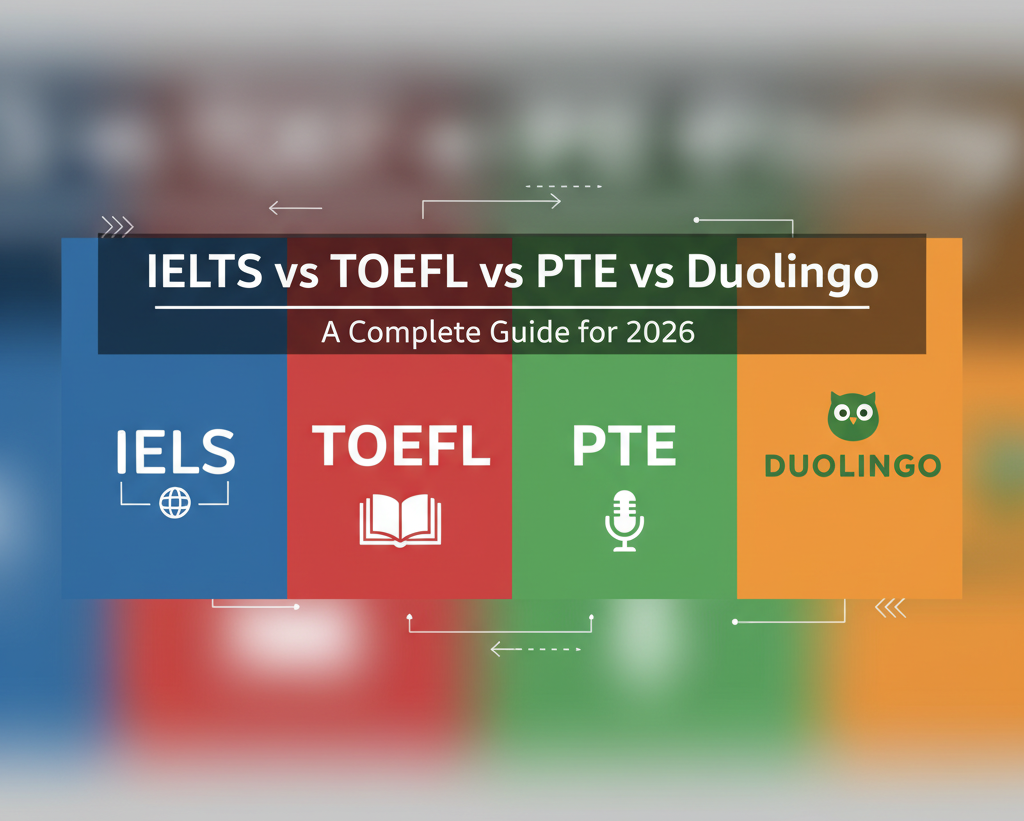Stop guessing. If you’re applying to Italy for 2026, the biggest risk isn’t your GPA it’s accidentally losing a full year because of a calendar mistake.
There are two main annual Italy intakes: the massive Fall (September) intake and the strategic Spring (February) intake, but they are not equal. The Fall intake holds 80% of all courses and nearly all scholarship slots, making it the non-negotiable choice for competitive students. The Spring intake is a limited, strategic alternative. Before you spend time researching courses, you must determine which window your preparation timeline can realistically meet. Let’s look at both options to ensure your 2026 application is perfectly timed.
Understanding Both the Italy Intakes: A Quick Comparison
If you want to study in Italy the right intake is essential and depends on your academic level, career goals, and the specific programs you are targeting.
| Feature | Fall/Autumn Intake (September) | Spring/Winter Intake (February) |
| Start Date | Mid-September to Early October | Mid-February to Early March |
| Program Availability | 80% (Primary Intake): A significantly wider range of programs, including the most competitive Master’s and Bachelor’s courses. | 30% (Secondary Intake): Limited program selection; usually specific programs or departments only. |
| Competition | Higher application volume. | Lower application volume. |
| Scholarships | Highest Opportunity: Most major institutional and regional scholarships are allocated in the early Fall rounds. | Limited Opportunity: Few new scholarships are available; mainly relying on residual funds. |
| Visa Processing | Potentially longer due to high demand. | Potentially quicker due to low application volumes. |
Choose your dream country
When do you want to study abroad?
What's your highest level of education?
Select you current city
How Leap will help you
Personalised University Shortlist
Express Applications with Quicker Admits
End-to-End Application Support
September Italy Intake 2026 for International Students (The Primary Choice)
The Fall Intake, also known as the September Intake, is the most common and comprehensive start date, aligning with the traditional academic year. Indian students often prefer this primary intake as it offers the widest range of courses. Most universities in Italy also prefer this to be their primary or main intake for most courses.
Why Choose the September Intake?
- Widest Selection: It offers approximately 80% of all university courses, including high-demand programs like Engineering, Architecture, and specialized Master's degrees.
- Best Job Alignment: Aligning with the academic calendar provides better access to summer internships and post-graduation job search cycles.
Strategic Timeline for September 2026 Start
| Actions | Timeframe (2025–2026) | Strategic Rationale |
| Preparation & Entrance Exams | 12–18 Months Ahead (Jan 2025 – Aug 2025) | Schedule your GMAT/GRE/IELTS/SAT to ensure optimal scores before application windows open. |
| Application Start Time | Nov 2025 to Mar 2026 | CRITICAL: Early rounds (Nov-Jan) offer the highest chance for scholarships and competitive programs (e.g., Bocconi Round I). |
| Application Deadlines (General) | May to June 2026 | Deadline for most non-competitive or later rounds. |
| Visa Application | May to July 2026 | Submit immediately upon receiving the Letter of Acceptance (LOA) to accommodate 1–3 month processing time. |
| Starting Date of Classes | September to October 2026 | Final enrollment and class start. |
Early Rounds & Scholarship Tip: For highly selective Master of Science (MSc) and MA programs, slots for the most sought-after degree programs and, more importantly, the majority of scholarship opportunities, are highly likely to be allocated during the earliest selection rounds (November to January).
February Italy Intake 2026 for International Students (The Strategic Alternative)
The Spring Intake is a secondary intake with fewer programs available, and classes usually begin in late February or early March. This intake is often a strategic choice for students who missed the September deadline.
Why Choose the February Intake?
- Quicker Visa Processing: Lower application volumes often mean quicker visa processing compared to the busy September period.
- Less Competition: Some programs may have lower competition, increasing your admission chances.
- Avoids Study Delay: If you've taken a gap year or are graduating late, the February intake helps you avoid further delays in your studies.
- Personalised Start: A smaller intake often means a more personalized and less overwhelming start to university life.
Application Timeline for February 2026 Start
| Actions | Timeframe (2025) | Strategic Rationale |
| Application Start Time | September to November 2025 | The window is much shorter and earlier than you might expect for a spring intake. |
| Application Deadlines | November to December 2025 | Deadlines are rigid due to the shorter window before the end of the year. |
| Visa Application | Immediately after Acceptance (Dec 2025 – Jan 2026) | Must be executed quickly to secure visa by late February start date. |
| Starting Date of Classes | Late February to Early March 2026 | Final enrollment and class start. |
Admission Eligibility Requirements for Italy Intake
Before getting into the application steps, it is essential to ensure that you meet the mandatory criteria. Meeting these requirements dictates whether you can apply for either intake.
Mandatory Eligibility Criteria for Indian Students
| Eligibility Criteria | Bachelor’s Requirements | Master’s Requirements |
| Academic Standing | Completion of 12th grade with a GPA of 3.0 or 75% | Minimum of 7.5/10 in your Bachelor’s degree |
| English Language | IELTS: 5.5, TOEFL: 80 (For English-taught programs) | IELTS: 5.5, TOEFL: 80 (For English-taught programs) |
| Italian Language | CILS: A2, CELI: B2 (For Italian-taught programs) | CILS: A2, CELI: B2 (For Italian-taught programs) |
Essential Required Documents for Application
The document submission process must be viewed as an Integrated Visa Risk Management critical path. Failure to meet one prerequisite step can result in a cascading failure for the entire application timeline.
- Academic Records: Previous academic years' mark sheets and final Bachelor's Degree (if applicable).
- Statement of Purpose (SOP) and 1–2 Letters of Recommendation (LORs).
- Test Scores: IELTS /TOEFL/ GRE /GMAT/ SAT scorecard.
- Identity: A valid passport and passport-size photographs.
- Financial Proof: Detailed financial documents showing ability to cover tuition and living costs.
- Program-Specific: Portfolio (for design/arts) or Work Experience Letter (for some Master's programs).
Tuition Fees & Top Scholarships for Italy Intakes
Understanding costs and financial aid is crucial for Indian students. Italy remains an affordable destination compared to other European countries, but the type of university makes a vast difference in tuition.
Average Annual Tuition Fees in Italy (EUR vs. INR)
| University Type | Average Tuition Fees (Annual) |
| Public University | €500 to €4,000 (₹51,790 to ₹4,14,320) |
| Private University | €6,000 to €20,000 (₹6,21,480 to ₹20,71,600) |
Note: The INR values provided are approximate (1 Euro ≈ 103.58 INR) and should be checked against the latest rates when planning your finances.
Best Scholarships for Indian Students
The major scholarships in Italy are often allocated during the early application rounds (November–January).
| Scholarships | Offered By | Award Amount (Approx.) |
| Italian Government Scholarship | Italian Ministry of Foreign Affairs (MAECI) | €9,000 (₹9,32,220) |
| International Talents @Unibo | University of Bologna | €4,500 (₹4,66,110) and a full tuition waiver |
| Excellence Scholarships Program | University of Milan | €8,000 (₹8,28,640) in total |
| Padua International Excellence | University of Padua | €8,000 (₹8,28,640) per year |
Planning Ahead: Tips for a Winning Application
Planning ahead is essential. Here are the steps and key tips to ensure your Italy intake journey is successful:
Application Steps
- Research Programs & Universities: Identify target universities and programs. Check specific requirements like language proficiency and GPA.
- Verify Admission Requirements: Review the admission criteria for your selected programs.
- Collect Required Documents: Gather all necessary documents (see checklist above).
- Submit the Application: Complete the application online through the university's portal and pay the required fees.
- Await Admission Decision: Check for updates on your application status.
- Apply for a Visa: Once admitted, apply for a student visa at the Italian embassy or consulate in India.
Strategic Tips for Both Intakes
- Prioritize Scholarship Rounds: The September intake's early rounds (Nov–Jan) are non-negotiable for maximum scholarship opportunity.
- Integrated Visa Risk Management: View the Universitaly Pre-Enrollment Application and the Visa Application as the single biggest bottleneck. Get your English/Italian certifications completed by July 31st.
- The February Advantage: If you missed the September deadlines, use the February intake not as a fallback, but as a strategic way to avoid a full year's delay while enjoying quicker visa processing.
Conclusion
Choosing the right Italy intake, be it the comprehensive September start or the strategic February alternative, is the first critical step toward your academic journey. By adhering to a structured timeline and preparing your documents well in advance, especially for the early application rounds and the mandatory visa process, you significantly increase your chance of securing your admission and scholarships.
Planning for the 2026 intake? Start your prep now, and if you’d like guidance through the complex application, document, and scholarship timelines, Leap Scholar’s experts are here to help you secure your place at your preferred Italian university.
Frequently Asked Questions
-
Q. How many intakes does Italy have?
A. Italy has two main italy intakes each year: the September intake and the February intake. September is the primary intake in Italy because most universities open full program lists during this period. February is a secondary option and is commonly seen across selected February intake universities in Italy, but with fewer courses.
-
Q. Which intake is best for Italy?
A. The September intake works best for most students because it offers the widest selection of programs and aligns with the full academic year. This makes it the strongest choice among all intakes in Italy for international students. The February intake is still helpful if you need a mid-year start and want to target specific February intake universities in Italy that open programs in Spring.
-
Q. Does Italy have a Feb intake?
A. Yes, Italy offers a February intake, which is available at select February intake universities in italy. While it provides a mid-year entry option, the course list is smaller compared to September. Students who miss early deadlines often use this intake in Italy to avoid delaying their studies.
-
Q. Is IELTS compulsory in Italy?
A. IELTS is required only if your chosen university for the September or February intake asks for proof of English proficiency. Many universities also accept TOEFL, PTE, Duolingo, or their own language tests. If you choose an Italian-taught program, you will need Italian language certification instead.
-
Q. When to apply for a Masters in Italy?
A. For September Italy intakes, applications usually open from November to March. For the February intake in Italy, universities accept applications from September to November of the previous year. Timelines vary by institution, so checking official dates is essential.
-
Q. What month does college start in Italy?
A. Classes begin in late September or early October for the main intake, and late February or early March for the secondary intake. A few January intake universities in Italy may offer modular or specialised courses, but these are exceptions. Always check the exact start date with your university.















Have Questions? Get Guidance to reach your Dream University
Connect with India's finest counsellors and biggest study abroad community.
Get Guidance